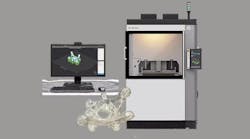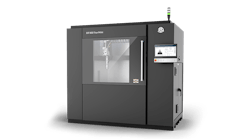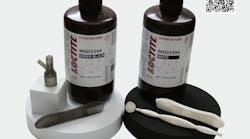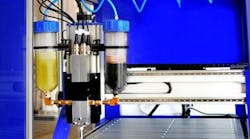Case Study: 3D Printing is on the Highway to the Comfort Zone
The history of the Oberle shoe company began more than 150 years ago. In 1859, the great-great grandfather of Oberle’s current General Manager, Achim Oberle, opened a cobbler’s shop in Ettenheim that made shoes for customers in town and the surrounding areas. In 2006, the company began specializing in “Healthy Shoes.” And today, it’s recognized as a leader in the orthopedic footwear technology space. The company saves a lot of time and money by using the German RepRap X350pro 3D printer.
Oberle – Gesunde Schuhe is a specialty manufacturer that develops products for everything associated with legs, feet, and/or extremities. Behind its products is a highly technical process. The so-called 3D posture analysis (which involves 3D measurements of whole body posture), as well as the 3D walking analysis (which measures gait, body angles, and forces), have long been standard procedures for this company. To stay on the cutting edge of the industry, Oberle – Gesunde Schuhe must continuously employ state-of-the-art technologies as they become available.
Years ago, the foot was modeled by first creating a plaster of it. This plaster imprint was then filled with foam to create a “positive” of the foot to be used as a shoe last, which models the shape of the foot and is used to construct the shoe. However, Mr. Oberle was allergic to the foam, so an alternative method was needed. At that time, 3D scanning was able to produce 3D measurements of the foot, which would then be sent to a contractor who would mill a shoe last from wood. While this provided a solution to the foam lasts, Mr. Oberle felt that outsourcing the production of wooden lasts was an unnecessary step in the process, especially when lead times could be long. Achim Oberle, who was already familiar with 3D printing, began looking for a way to make this technology work for his business. This is when he decided to start creating the lasts in-house with a 3D printer.
Recommendations from friends and business contacts led Oberle to the purchase of the German RepRap X350pro. The X350pro has been in operation since September 2016 and is used by the company on a daily basis.
“The main advantage is that we can work considerably faster,” raves Mr. Oberle. “Even the foot shell can be produced with a 3D printer. This foot shell is used to verify that the earlier 3D scan is a perfect fit. Clear plastic makes this easier. Once the shape fits perfectly, the final product can be printed. Adjustments are fast and easy, and so are fittings. With 3D printing, the first fitting can be done in as little as an hour!”
Cost-savings are another important advantage offered by the use of 3D printing. Since this production method generates no waste at all, the new process is considerably more cost-effective for the company than the previous method. Initially, the company used German RepRap PLA material, but soon switched to PET-G filament. PET-G is odorless during processing, and its good viscosity allows for high printing speeds.
The German RepRap X350pro 3D printer has already become a regular tool and an integral part of the daily workflow. The 3D printer often runs throughout the night, and the company is considering the purchase of a second machine to manage its increasing order volume.








